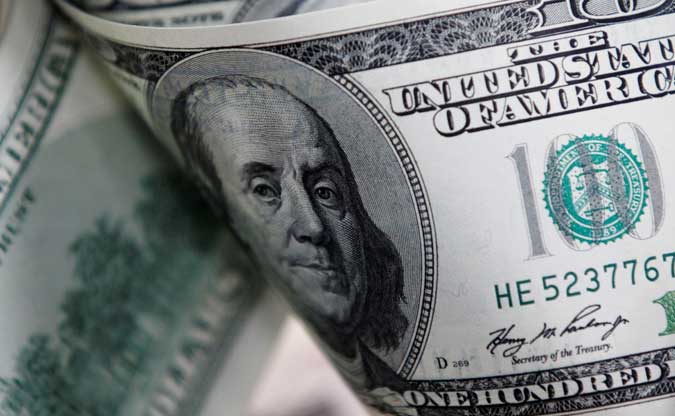By Beatrice M. Laforga and Luz Wendy T. Noble, Reporters
EMERGING ECONOMIES could experience capital flight once the US Federal Reserve lifts interest rates in 2023, according to Bangko Sentral ng Pilipinas (BSP) Governor Benjamin E. Diokno, who believes this is less of a threat to the Philippines compared with other economies.
“Fed rate hikes by 2023 could mean capital outflows from developed and emerging economies to the (United States). That’s problematic for countries with huge foreign debt and limited foreign exchange reserves,” he said in a Viber message.
Mr. Diokno said emerging countries are not a “homogenous group,” stressing the impact of a monetary policy tightening from the most powerful central bank may mean some developing economies could be badly affected while some will see little damage.
“The Fed rate hikes are seven quarters away. The Philippine government should continue with its game-changing ‘Build, Build, Build’ program and its structural reforms pending in Congress,” Mr. Diokno said.
Central banks slashed interest rates to record lows to keep their economies afloat during the crisis by injecting liquidity in the financial markets and encouraging banks to lend.
The Federal Reserve hinted last week that it may need to raise benchmark interest rates twice in 2023 as the US economy’s recovery picks up pace.
“We have sound fundamentals — hefty GIR (gross international reserves), low debt-to-GDP (gross domestic product) ratio, sound and resilient banking system, and we have adopted structural reforms — that a Fed rate hike in 2023 is less of a threat to the Philippine economy compared to other developing and emerging economies,” Mr. Diokno said.
The Philippines’ foreign exchange buffers stood at $106.978 billion as of end-May, dipping 0.67% from the $107.705 billion as of end-April, based on BSP data. The GIR hit record $110.117 billion as of end-December.
Ample foreign exchange buffers protect the country from market volatility and ensure the country can pay its debts in the event of an economic downturn. At its end-May level, the GIR is enough to cover 12.2 months’ worth of imports of goods and payments of services and primary income.
The country’s debt-to-GDP ratio stood at 60.4% as of end-March from 54.5% as of end-2020, based on data from the Bureau of the Treasury.
Meanwhile, ING Bank N.V. Manila Senior Economist Nicholas Antonio T. Mapa said he expects the BSP to “carefully craft its own exit strategy” to mitigate the adverse impact once it tightens monetary policy.
“As for the Philippines, it’s quite clear that Governor Diokno is attempting to do what’s best for the economy while also monitoring the situation abroad as these developments would likely have a direct impact on the Philippine financial system,” Mr. Mapa said, who is expecting the BSP to keep its policy rate at 2% until June 2022.
“This puts the pressure on the National Government to get the economic ship in order as quickly as possible as the BSP can only keep up the stimulus for so long, as a Fed rate hike will indeed need to be reciprocated by the BSP,” Mr. Mapa said.
ANZ Research analyst Rini Sen said the BSP will remain committed to keep rates unchanged until at least the first quarter of 2022, when the economy will likely be seeing more solid growth.
“We are broadly in consensus with the BSP and see the first rate hike in the Philippines not before the first quarter of 2022. By then growth would have picked up firmly and inflation also materially subsided. Beyond that, we believe the BSP would mirror the rate hike trajectory of the Fed,” Ms. Sen said in an e-mail.
The Monetary Board is scheduled to meet for a policy review on Thursday. A BusinessWorld poll last week showed 14 out of 16 analysts expect the BSP retain the key policy rate at 2%.
Mr. Diokno has said the central bank will retain a supportive policy stance “for as long as necessary, until the economic recovery gets underway,” which he earlier projected to likely happen in the second half of 2022.
NORMALIZATION OF RATES
Bringing the interest rates back to the pre-pandemic levels is normal and may happen soon to prevent investors from bloating their debt, Gil S. Beltran, chief economist at the Department of Finance (DoF), said.
“Normalization of interest rates is necessary to avoid overborrowing and overinvestment in some sectors as the economy moves to a higher growth path after the pandemic,” Mr. Beltran said on Monday via e-mail.
Since interest rates will increase soon, investors can position themselves by investing in sectors that will benefit the most under the new normal when restrictions are lifted and the coronavirus is no longer that much of a threat, DoF’s Mr. Beltran said.
“Investors should look at sectors that make money under the new normal because it’s necessary to normalize (interest rates). The pent-up demand is there, if you open up the floodgates, they will all go to the provinces, beaches and tourist areas. The economy will go back to its usual shape because the demand is still there,” he said.
VOLATILITY
For some analysts, the impending monetary policy tightening by the Fed could cause volatility in the peso’s trading. The local unit has weakened to a P48-per-dollar level after moving around the P47 level in the previous months. It closed at P48.695 on Monday, weaker by 67.5 centavos from its P48.02 per dollar finish on Dec. 29, 2020.
“This can cause exchange market pressure and lead BSP to recalibrate their policy settings ahead of median expectations,” Bank of the Philippine Islands Senior Economist Emilio S. Neri, Jr. said in a Viber message.
Aside from a rate hike, the market is also on the lookout on the timeline for the tapering the Fed’s monthly bond purchases, Mr. Neri added.
In case the BSP will retain its record low policy rate of 2% and not follow the Fed’s tightening, Mr. Neri said bonds and the foreign exchange market “could adjust substantially.”

